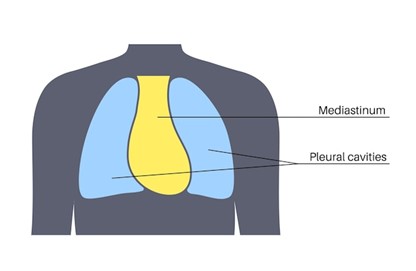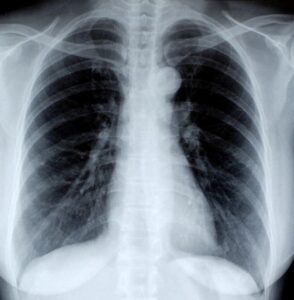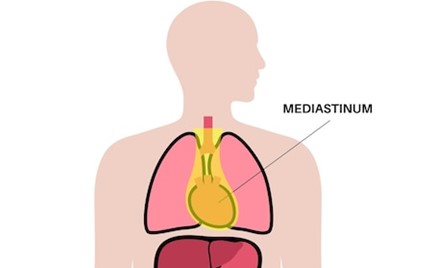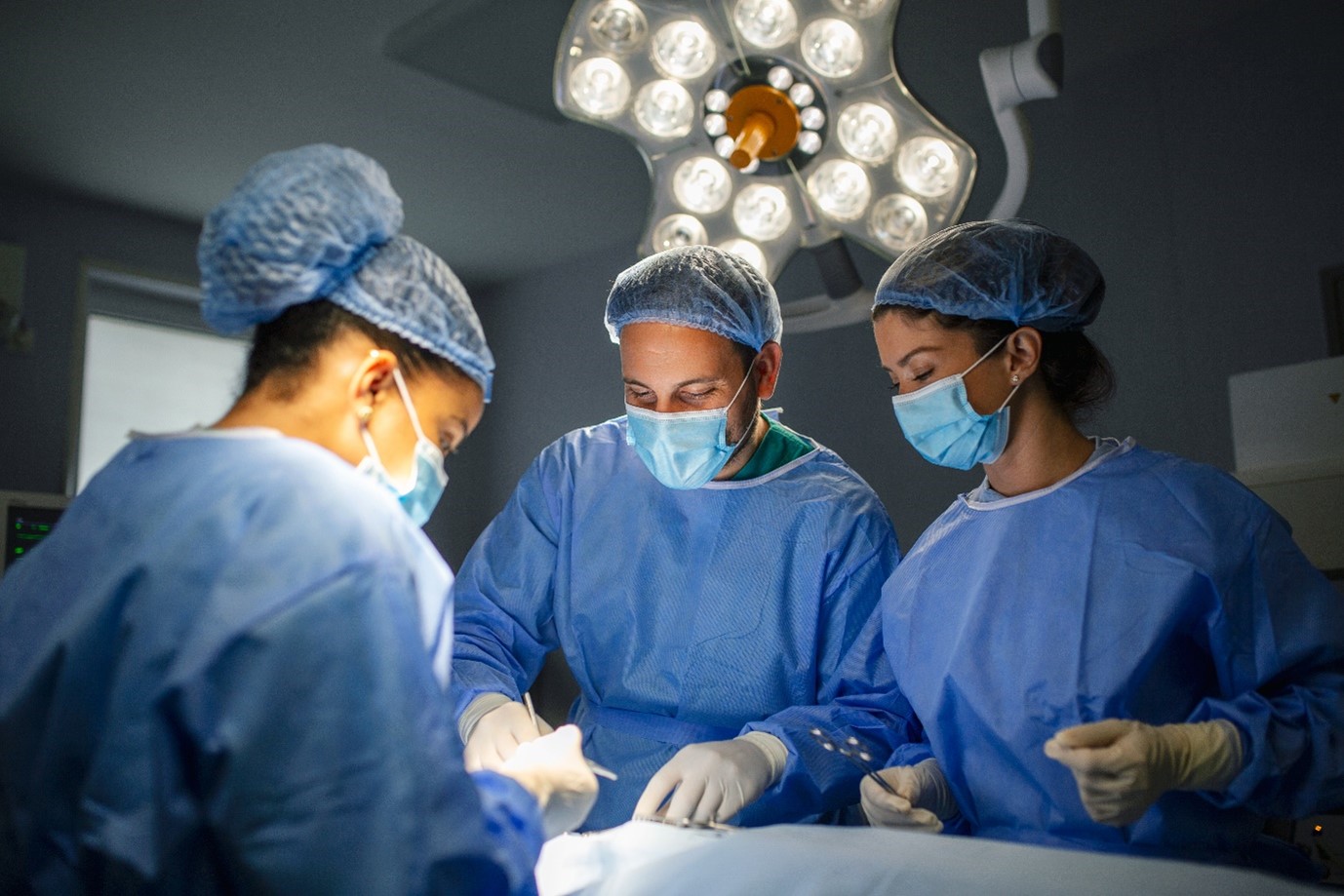Mediastinal Mass Surgical Treatment in Mumbai
The mediastinum is the area between the heart and lungs on either side. Masses arising in this space can be either harmless (benign) or serious (malignant). Depending on where they arise from, the most common tumours are thymomas, lymphomas, and neurogenic tumors.
These lesions may cause symptoms like chest pain, breathlessness specially on lying down and facial puffiness in advanced stages where they cause compression of surrounding structures like the trachea, heart or lungs. Very early lesions rarely cause symptoms (Thymomas can cause myasthenia gravis). Most mediastinal tumours (except lymphomas, and some germ cell tumours) need surgical excision. Some may need chemotherapy and or radiotherapy before or after surgery, depending on the type of tumour.
Dr. George Karimundackal, a leading Thoracic Surgeon in Mumbai offers comprehensive treatment for Mediastinal tumours.
Experiencing chest discomfort? Don’t wait – consult a doctor today to ensure your health.
How are these masses diagnosed? Let’s find out.
When diagnosing a mediastinal masses or tumors, doctors rely on several tests and procedures to accurately identify and assess the growth. These diagnostic steps are crucial for determining the nature of the mass and planning suitable treatment. Here’s a breakdown of these procedures:
Imaging Tests:
- X-rays: These are typically the initial step in the diagnostic process. An X-ray can reveal the presence of a mass in the chest.
- CT Scans: These provide more detailed images than X-rays, offering cross-sectional views of the chest to help identify the mass, its characteristics and relation to surrounding critical structures. It also helps to ensure that the tumour has not spread to the lungs.
- MRI: The MRI produces detailed images, effectively distinguishing between healthy and abnormal tissues. It is particularly useful to characterise thymic lesions.
- PET Scans: This test involves injecting a special dye with radioactive tracers into the body, allowing doctors to determine whether the tumour has spread to the lymph nodes or other parts of the body. This test is indicated in select mediastinal tumours only.
Biopsy Procedures:
- Needle Biopsy: Using a thin needle to extract a small tissue sample from the mass for examination, usually under CT guidance.
- Surgical Biopsy: Doctors perform a minor surgical procedure to get a larger tissue sample. This if at all required, is usually preformed using minimally invasive techniques
Additional Tests:
- Tumour markers: This a specialised blood test which can clinch the diagnosis in certain mediastinal masses like germ cell tumours. It’s important that this test is performed particularly in young adults or adolescents with a mediastinal mass, even before a biopsy.
- Anti ACH receptor antibodies: In case of thymomas, this test can help detect asymptomatic myasthenia gravis.
These diagnostic procedures are essential for thoroughly evaluating the mediastinal mass, guiding healthcare professionals in devising the most effective treatment strategy. If your doctor recommends these tests, it’s to ensure a comprehensive understanding of your condition for optimal care.
Wondering about the treatment options? Here’s what you need to know…
Choose the path to recovery with Dr. George Karimundackal's expertise
Treatment of Mediastinal Tumors or Mass
Most mediastinal tumours need surgical excision. The exceptions are lymphomas, small asymptomatic neurogenic tumours and some germ cell tumours, specially if they have responded well to chemotherapy. A thymectomy is sometimes indicated in patients with myasthenia gravis, uncontrolled on medication; even if their thymus gland is not enlarged.
These tumours can be approached in the following ways:
- Sternotomy: In this procedure, the thoracic surgeon makes a full or partial opening of the breastbone to access the mediastinum. This procedure is suitable for removing large or complex tumours, especially in the anterior mediastinum.
- Thoracotomy: In this procedure, the thoracic surgeon makes an incision on the side of the chest. Thoracotomy is suitable for certain types of tumours, particularly in the posterior mediastinum.
- Video-Assisted Thoracoscopic Surgery (VATS): A minimally invasive approach using small incisions and a camera to guide the surgery. Ideal for smaller, benign tumours.
- Robotic Surgery: Similar to VATS, but uses robotic arms for more precision. It’s gaining popularity for its precision and enhanced recovery. These minimal access techniques ensure smaller incisions, earlier recovery and discharge from the hospital and easier transition into day to day work.
- Mediastinoscopy: A less invasive procedure primarily used for biopsy or staging rather than tumour removal.
- Cardiopulmonary bypass and vascular support : A few tumours are so big and adherent to the heart and vital structures that the heart needs to be temporarily stopped before attempting removal. Dr. George Karimundackal and his team in Nanavati Hospital are one of the few teams in Mumbai which performs these complex resections.
Apart from surgery, is any more treatment required?
Chemotherapy and Radiation Therapy:
Certain mediastinal tumours can be treated with chemotherapy alone. Hence it is important to achieve a diagnosis either through a biopsy or with tumour markers before starting treatment.
- Chemotherapy: This treatment uses special medicines( either in pill form or through veins) to help shrink or kill the tumou
- Radiation Therapy: Doctors use radiation beams to target and kill tumour cells. It can be a stand-alone treatment or with chemotherapy.
Chemotherapy and radiotherapy may be used as stand alone treatment measures or as an adjunct to surgery depending on the nature, location and size of the tumour. A multidisciplinary discussion is generally conducted for such tumours.
What comes after treatment?
Rehabilitation and Recovery post Mediastinal Mass Surgery
Recovery after surgery in such tumours depend on the location and size of tumours and the complexity of excision. On an average, in uncomplicated cases, the patients shifted from the ICU on day 1, taking full oral feeds and ambulating well. By day 3, all drains are usually removed and the patient is good to be discharged to home. Rehabilitation after surgery is a joint effort by the surgeon, pain team and physiotherapists.
Follow-up after Treatment
Dr. George Karimundackal conducts regular health check-ups post-treatment, including blood tests and imaging as and when required. The frequency of follow up is determined on a case by case basis.
Schedule Your Mediastinal Mass Surgery Consultation for a healthier tomorrow.
Frequently Asked Questions
No. Mediastinal tumours can be of different types depending on their location and tissue of origin. The common malignant tumours include thymomas, lymphomas and mediastinal germ cell tumours. Some tumours like mediastinal thymolipomas and neurogenic tumours are benign.
The success rate for mediastinal tumour treatments varies, mainly depending on the tumour type, stage, and the patient’s overall health. Advances in medical technology and treatment methods have significantly improved outcomes in recent years. The results in benign tumours are excellent and remains very good for tumours like germs cell tumours which respond to chemotherapy.
Any surgery within the thoracic cavity is considered major surgery because of the proximity of critical blood vessels, heart and lungs. Small mediastinal tumours can be easily excised by minimally invasive techniques like VATS or robotic surgery and the recovery is excellent. Some larger, malignant tumours may involve more complex resections with or without cardiopulmonary bypass and require longer for complete recovery.
Yes, lifestyle changes can significantly impact the management of mediastinal tumours and recovery. Adopting a healthy diet, exercising regularly, avoiding smoking and reducing stress can all enhance overall health, aid recovery and improve treatment outcomes. It is also important to follow medical advice closely and attend all follow-up appointments.





